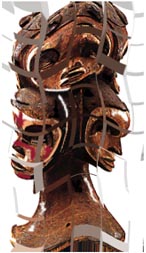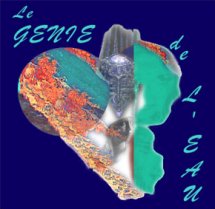 |
|
 |
|
 |
|
 |
|
 |
|
 |
|
 |
|
 |
|
 |
|
 |
|
 |
|
 |
|
 |
|
 |
|
 |
|
 |
|
 |
|
 |
|
 |
|
 |
|
Site Archive (1997-2020) - Depuis 2021 le nouveau site est / Since 2021 the new website is ICI/HERE »»» |

 AFRIQUE VIRTUELLE > PROJETS
> GÉNIE ET POUVOIR DE L'EAU
> POUVOIR DE L'EAU
AFRIQUE VIRTUELLE > PROJETS
> GÉNIE ET POUVOIR DE L'EAU
> POUVOIR DE L'EAU
|
|
|


|
 |
2nd SECTION : " THE POWER OF WATER "
A Little Memo : This section focused on scientific issues will be opened to studies conducted by anthropologists, ethnologists, historians, sociologists, engineers, scientists working on environment issues, biologists, astronomers, chemists, economists, agronomists, hydrogeologists. A body of studies will present the various works imagined and achieved by men to master the strength of water, to preserve their natural resources of water, to struggle against risks of pollution and epidemics, and to distribute these resources in a more equitable manner on the whole planet. Other analyses will examine the role of water in human societies. Then, we will look up beyond the terrestrial limits with some investigations and studies conducted by astronomers and space scientists. Some recent research indicate that water can be also found on Mars, and some new images of Europa collected by the Galileo spacecraft proved that water under a liquid form may have very possibly existed on this satellite, and that today this water may still be present beneath Europa's cracked icy crust. Moreover, man's exploration of the interstellar space seems to be more and more motivated by the quest for water within the solar system and beyond.
ARTICLES ON-LINE :
"Alma da Agua : A Space Awareness Initiative" by Richard Clar and Dinis Ribeiro
Natural water samples gathered from the eight Portuguese speaking countries
will be combined in space aboard a Brazilian sounding rocket. In celebrating
metaphorically their common bond of language, the project addresses the
possibility of greater technical unification and deeper collaboration of
Portuguese speaking countries in addressing the issues of water management
using space technology.
(Text in English)
The Humanising of Rural Water Supply in Africa by
Alan MALINA
(Text in English)
Amazing Amazon : esthétique évolutionnaire by
José Wagner GARCIA and
Paulo Roberto MARTINI
(Text in French)
La fonction symbolique de l'eau en Afrique Noire : une approche culturelle by
Camille TALKEU TOUNOUGA
(Text in French)
Nommo, le génie d'eau. Paroles Dogon, Tellem & Nongom, by Jacky BOUJU
(Text in French)
WATER SYMBOLISM IN SHAMBAA ARTS OF HEALING, by Barbara THOMPSON
(United States. University of Iowa)
In Shambaa cultural heritage, notions of health and sickness are directly associated with long-held symbolic relationships between the environment and the spirit world. Spirits are seen as being ubiquitous to the environment and just as aspects of the environment can influence health or sickness, so too can spirits. In the Shambaa sacred arts of healing, called ughanga, images, materials and symbols associated with ecological notions are used in healing processes to represent and invoke the spirit world in order to uphold personal, communal and cultural well-being. Ecological imagery is used also to express continuities and changes in cultural, social and moral codes that not only educate and guide the way people behave but also (re)define their place within the broader universe (see Thompson 1999). This essay will examine specifically the symbolism of water as it is used in the visual and performing arts of spirit healing (ughanga) to express notions of health, cleanliness and purity.
(Text in English)
- Karin RETIEF :
« Portrait of the Himba » : The Himba of northern Namibia are striking people, not only because of the dark red ochre they paint on their bodies, but for
the way they have chosen to preserve their own unique ways. Self sufficient and totally independent, a plan to build a huge
hydro-powered dam on the Kunene river, which runs through their ancestral land, will change their ways forever. I see the flow
of the Kunene River as a metaphor for the change the Himba face with construction of the dam.
Now, while the river still flows, the Himba visit their ancestral graves on the banks of the river where guidance is sought from the
ancestors. The river is where their cattle and goats go to graze and the women fetch water. But when the construction of the
dam stops the flow of the river, the way of life the Himba has known for centuries will stop as well, to make way for change -
the old ways will be lost »
(Text published in English presented within the context of the « Spirit and Power of
Water »)
Elisabeth PIOTELAT French engineer et member of the SETI (SEARCH FOR EXTRA TERRESTRIAL INTELLIGENCE). In an article untitled « Le Reflet des
étoiles à la surface du point de l'eau », Elisabeth insists upon the
importance of water, an indispensable element to life. « Water makes the
planet Earth a « unique » planet in the solar system, the only one to have
an ecosystem, the richest but also the most vulnerable one ». Hence the
importance to study the presence of water in the solar system. Elisabeth
Piotelat quotes - with reason - the words that the Malian engineer Cheik
Mobido Diarra addressed to the children in Mali : « If we can find the
water hiding up there (on Mars), we will be able to find the water hiding
here. The tools used on Mars could be used here. The techniques developed
to find water on Mars, to exploit it, purify it and distribute it, will
help us resolve the problem of water on the Earth ».
(Text in French)
Dr. John MARCUS (SEARCH FOR EXTRA TERRESTRIAL INTELLIGENCE) :
« Water and Radio Seti ». (Text in English).
|
|
|
|
|
[ S'abonner ] [ Recherche ] [ Statistiques ]
[ Accueil ]
Copyright Association Leonardo/OLATS © 1997
pour toute re-publication de cette page, merci de contacter Annick Bureaud < info@olats.org>
pour les problèmes concernant le site, notre webmaster < webmaster@olats.org>
Leonardo is a federally registered trademark of Leonardo/ISAST -
Leonardo est une marque déposée de Leonardo/ISAST, selon la loi fédérale
des Etats-Unis d'Amérique.
|
|










